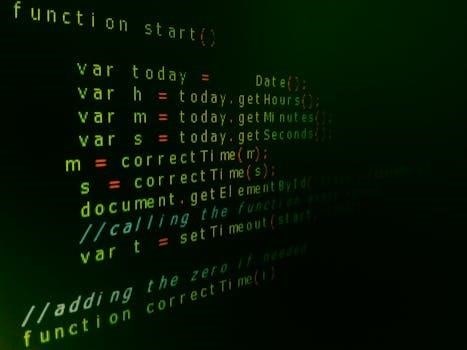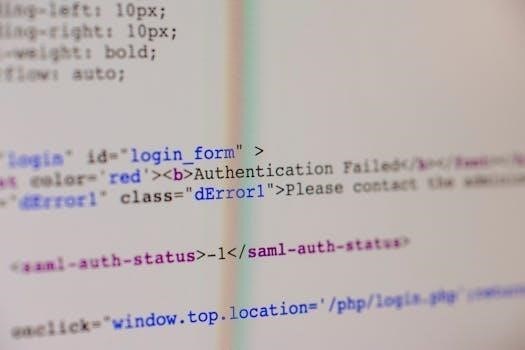Automating PDF form filling with Java is a powerful technique for streamlining document workflows. Several Java libraries, such as Apache PDFBox, iText, and Aspose.PDF, facilitate programmatic access to PDF form fields. These libraries enable developers to load existing PDF documents, access their form fields, and populate them with data, ultimately automating processes.
Why Automate PDF Form Filling?
Automating PDF form filling with Java offers numerous benefits, primarily by eliminating the need for manual data entry, which is time-consuming and prone to errors. This automation significantly enhances efficiency by reducing the time spent on repetitive tasks. Furthermore, it ensures data consistency across multiple documents, as the same data can be accurately inserted into numerous forms. It also greatly improves the scalability of processes, allowing businesses to handle large volumes of forms effortlessly. Automating PDF form filling enables seamless integration with other systems, such as databases or CRM, streamlining data flow, and minimizing the need for manual transfer between systems. This can also reduce printing costs by enabling digital form processing, further promoting an eco-friendly approach. Moreover, it greatly improves the user experience by providing instantaneous form generation or population, removing delays. This automation also helps in managing compliance by ensuring that all forms are completed accurately and consistently. Consequently, it reduces the risk of non-compliance due to human error, which is especially important for institutions needing accurate record-keeping. Automation of this kind can also free up human resources to focus on more strategic tasks, improving overall organizational productivity. In essence, the automation of PDF form filling by Java offers cost-effectiveness, accuracy, and time savings.

Common Use Cases for PDF Form Automation
Automated PDF form filling using Java has numerous practical applications across diverse sectors. One prominent use case is the generation of personalized reports, where data from databases or other systems is merged into PDF templates to create individualized documents. Another common application is in the automation of forms for applications, such as loan or job applications, where user data is populated into PDF forms, streamlining the application process. In the educational sector, automated form filling can be applied to generate certificates, diplomas, and student transcripts with relevant data, reducing manual effort. Legal and government agencies commonly employ this automation for creating legal documents, permits, and licenses. Moreover, in the healthcare industry, patient intake forms and medical reports can be automatically filled with patient data, improving efficiency and accuracy. Furthermore, businesses frequently use this for generating invoices, purchase orders, and contracts from their systems. In the realm of human resources, employee onboarding documents and performance reviews are often automated using PDF form filling. This technology also finds applications in data collection and survey management, where responses are automatically populated into PDF reports. Finally, event management can leverage automated form filling to generate personalized tickets and registration forms, creating a seamless experience for attendees. This versatility makes Java-based PDF form automation a valuable tool across different industries.

Required Java Libraries
Several Java libraries facilitate PDF form filling, including Apache PDFBox, iText, and Aspose.PDF for Java. These libraries offer functionalities to access, manipulate, and populate form fields within PDF documents programmatically. Each has unique features and capabilities.
Overview of Apache PDFBox
The Apache PDFBox library is an open-source Java tool that provides extensive capabilities for working with PDF documents. It is a versatile tool, allowing for the creation of new PDF documents, manipulation of existing ones, and the extraction of content. For the specific task of filling PDF forms, PDFBox provides the necessary APIs to access and modify form fields within a PDF. This includes the ability to retrieve form fields by their names and set their corresponding values.
PDFBox is particularly useful for automating form filling processes, allowing developers to populate PDF forms programmatically. This is beneficial in scenarios where large amounts of data need to be inputted, or where data needs to be extracted from other systems and inserted into PDF forms. Furthermore, PDFBox includes several command-line utilities that can be utilized.
While PDFBox is a robust and widely used library, it is important to note that some specific form complexities may require an alternative approach or a more specialized library. Overall, it is a solid choice for handling PDF forms in Java.
Overview of iText
iText is a powerful Java library known for its versatility in PDF manipulation. It provides a wide array of features, including creating new PDF files, modifying existing PDFs, and, importantly, filling interactive forms within PDF documents. iText enables developers to programmatically access and set values for form fields, making it suitable for automating data entry into PDF forms. Beyond form filling, iText has the capability to save PDF files as various image formats like PNG or JPEG. The library also features a Canvas class that allows developers to draw geometrical shapes and add graphical elements to PDF documents.
iText’s robust set of tools make it a comprehensive solution for a variety of PDF-related tasks. This includes merging data into PDF fields using technologies such as FDF (Form Data Format) and providing developers with the means to control the appearance and functionality of PDF documents. However, while iText is feature rich, it is also worth noting that it has a different licensing structure compared to some other open-source options, which might be a consideration for certain projects.

Overview of Aspose.PDF for Java
Aspose.PDF for Java is a robust library designed specifically for working with PDF documents, providing a comprehensive set of features for various PDF-related tasks, including form filling. This library simplifies the process of interacting with PDF forms by allowing Java developers to programmatically access, modify, and populate form fields with data. It supports the AcroForm standard, making it possible to manipulate a wide range of PDF forms. Aspose.PDF for Java is particularly well-suited for applications that require creating, editing, and filling PDF forms, making it a practical choice for diverse business needs.
With Aspose.PDF for Java, developers can easily integrate PDF form automation into their applications. The library offers a straightforward API for filling form fields and ensures that the data is correctly placed in the designated fields. Its extensive functionality allows for more than just filling out fields, supporting tasks like merging data into PDFs using FDF technology. It is considered a very suitable API for creating applications that need to standardize procedures using fillable PDF forms, such as those used by courts or procurement firms.

Basic Steps to Fill a PDF Form Programmatically
To fill a PDF form programmatically, you first load the existing PDF. Then, access the form fields by their names. Finally, set the desired values for those fields. This process automates data entry into PDF forms efficiently.
Loading an Existing PDF with Form Fields
The initial step in programmatically filling a PDF form involves loading the existing PDF document that contains the form fields. This process is crucial as it provides the foundation for accessing and manipulating the form’s interactive elements. Libraries like Apache PDFBox, iText, and Aspose.PDF for Java offer methods to load PDF files from various sources, such as file paths or input streams. When loading, these libraries parse the PDF structure, including the form fields embedded within the document. This parsing is essential for subsequent steps, enabling the application to identify and interact with the form fields. Once the PDF is loaded, the library creates an in-memory representation of the document, making it accessible for further processing. It is important to ensure that the PDF is properly loaded before proceeding with field manipulation, as any issues during the loading process may result in errors. Different libraries might have slightly different approaches to this initial loading, but the fundamental principle is to create an accessible representation of the PDF and its form for Java applications to use. The loaded document becomes the starting point for further steps. This step is crucial before attempting to access or modify any of the form fields.
Accessing and Setting Form Field Values
After successfully loading a PDF document containing form fields, the next critical step involves accessing those fields and setting their values. Java libraries like Apache PDFBox, iText, and Aspose.PDF provide mechanisms to retrieve form fields by their names. Once a field is identified, its value can be programmatically set. This process typically involves methods such as ‘getField’ to access the field by its identifier and ‘setValue’ to modify the field with new data. When setting values, it’s essential to consider the specific type of each form field, as text fields, checkboxes, combo boxes, and list fields may have different requirements. For combo boxes and list fields, it’s crucial to use the values from the fields export options, not the display options, to ensure that the appropriate selections are made. The process requires a good understanding of the form fields’ structure and their data types. Also, these libraries often support different forms formats, such as AcroForm and XFA, so it’s important to use the appropriate access methods for each type. This step is fundamental to automating form population and allows for dynamic data insertion into interactive PDF forms, making it a key part of any form filling operation. The use of these methods enables the filling of form fields with data extracted from various sources.

Leave a Reply
You must be logged in to post a comment.